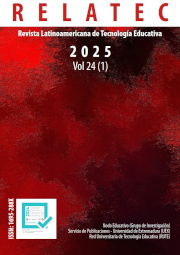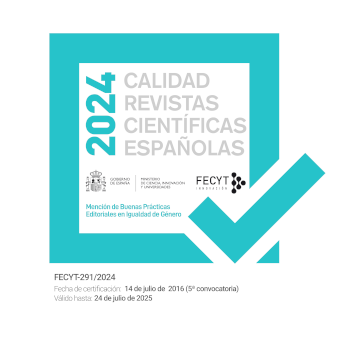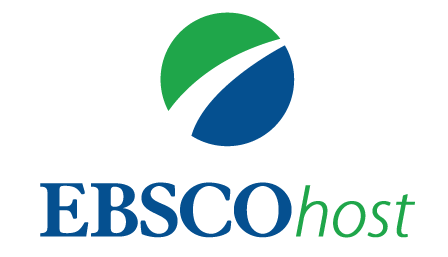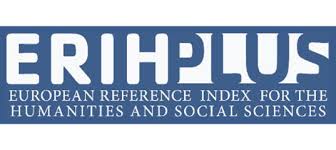Analysis of the Impact of Using a Gamified App for Spanish Spelling Practice in Primary Education
DOI:
https://doi.org/10.17398/1695-288X.24.1.9Abstract
This study evaluates the impact of GAUBI, a gamified app designed for Spanish spelling practice in primary education, using a quasi-experimental pretest-posttest design with 114 fourth-grade students. Participants were divided into three groups: traditional methods (control group), app use in classrooms (experimental group 1), and app use at home (experimental group 2). The app featured levels of arcade, research, and interactive fiction gameplay, scaling cognitive challenges to enhance learning. The intervention spanned three weeks, with participants engaging in structured app-based or traditional spelling exercises. Results showed that the group using the app at home achieved significantly higher spelling accuracy than those using traditional methods or app-only classroom approaches. Statistical analyses confirmed the superior effectiveness of home-based app use. The Binomial Effect Size Display highlighted notable improvements in specific spelling categories, such as complex letter combinations and accent rules. Discussion centered on the benefits of integrating gamification and ubiquitous learning tools in education, emphasizing the app’s adaptability and immediate feedback, which encouraged independent learning and sustained motivation. The study advocates for blending traditional and gamified approaches to foster comprehensive spelling competence, supporting educators with analytics-driven insights. The research underscores the app's potential to address broader curricular goals, including sustainable development objectives.
Downloads
References
Ahada, I. (2021). Investigating students preception of gamification on vocabulary learning using Marbel. Linguista: Jurnal Ilmiah Bahasa, Sastra, dan Pembelajarannya. https://doi.org/10.25273/linguista.v5i2.10387
Al-Razgan, M., & Alotaibi, H. (2022). Integrating Mobile Games in Arabic Orthography Classrooms. Arab World English Journal, 8, 146-165. https://doi.org/10.24093/awej/call8.10
Arokiasamy, A. (2017). A systematic review approach of mobile technology adoption in higher education. Economics, Management and Sustainability, 2(2), 48–55. https://doi.org/10.14254/JEMS.2017.2-2.5
Barberá, V., Collado, J.C, Morató, J., Pellicer, C., & Rizo, M. (2001). Didáctica de la ortografía. Estrategias para su aplicación práctica. CEAC.
Belduma Murillo, E. A., Castillo León, C. M. & Espinoza, E. (2020). Situación actual de la enseñanza de lectura comprensiva en estudiantes de quinto grado de la escuela Galo Plaza Lasso, Machala. Revista Científica Cultura, Comunicación y Desarrollo, 5(1), 57-61.
Blanco, C., Cortés, P., & Hernández, A. (2018). Guía de estrategias activas de enseñanza-aprendizaje para desarrollar competencias transversales en alumnos auditores. Capic Review, 16, 1-22. https://doi.org/10.35928/cr.vol16.2018.66
Booton, S. A., Hodgkiss, A., & Murphy, V. A. (2021). The impact of mobile application features on children’s language and literacy learning: a systematic review. Computer Assisted Language Learning, 1-30. https://doi.org/10.1080/09588221.2021.1930057
Brazo Millán, A. I., Muñoz González, J. M., & Castro de Castro, C. (2018). Aprendiendo léxico y ortografía francesa en la universidad mediante el videojuego SCRIBBLENAUTS. EDMETIC, 7(2), 18–36. https://doi.org/10.21071/edmetic.v7i2.7201
Buckley, P., & Doyle, E. (2016). Gamification and student motivation. Interactive Learning Environments, 24(6), 1162–1175. https://doi.org/10.1080/10494 820.2014.964263
Bustos, M. (1995). Breve ortografía escolar. Octaedro.
Butler, A. C., Karpicke, J. D., & Roediger, H. L. (2008). Correcting a metacognitive error: Feedback increases retention of low-confidence correct responses. Journal of Experimental Psychology Learning Memory and Cognition, 34(4), 918–928. https://doi.org/10.1037/0278-7393.34.4.918
Caballero-Mariscal, D. (2024). Percepciones de maestros en prácticas sobre aceptación de tecnologías móviles en procesos de enseñanza-aprendizaje. Un estudio de caso. (2024). Revista Latinoamericana De Tecnología Educativa- RELATEC, 23(1), 81-104. https://doi.org/10.17398/1695-288X.23.1.81
Camilleri, M., & Camilleri, A. (2019). The students' readiness to engage with mobile learning apps. Interactive Technology and Smart Education, 17(1), 28-38. https://doi.org/10.1108/itse-06-2019-0027
Carratalá, F. (1997). Manual de ortografía española. Castalia.
Casanova-Mata, I. (2023). Enhancing English Acquisition: Effects of among us Game-Based Gamification on Language Competence, Motivation, Attention, and Attitude towards the English Subject. Education Sciences. https://doi.org/10.3390/educsci13111094
Cassany, D., Luna, M., & Sanz, G. (2006). Enseñar lengua. Graó.
Catalá, B. (2009). La ortografía, un problema tradicional. https://studylib.es/doc/644943/laortograf%C3%ADa--un-problema-tradicional--bruno-catal%C3%A1
Chaverra-Fernández, D.I., & Bolívar Buriticá, W. (2016). Escritura multimodal digital, formas alternativas de comunicación y su incidencia en el aprendizaje de estudiantes de Educación Básica Primaria. Revista Lasallista de Investigación, 13(1), 181-187.
Chen, C.-M. (2009). Personalized E-learning system with self-regulated learning assisted mechanisms for promoting learning performance. Expert Systems with Applications, 36(5), 8816–8829. https://doi.org/10.1016/j.eswa.2008.11.026
Clark, D. B., Tanner-Smith, E. E., & Killingsworth, S. S. (2016). Digital Games, Design, and Learning: A Systematic Review and Meta-Analysis. Review of Educational Research, 86(1), 79–122. https://doi.org/10.3102/0034654315582065
Cortina, J. M. (1993). What is coefficient alpha? An examination of theory and applications. Journal of Applied Psychology, 78(1), 98–104. https://doi.org/10.1037/0021-9010.78.1.98
Council of Europe (2002). Marco común europeo de referencia para las lenguas: aprendizaje, enseñanza, evaluación. Instituto Cervantes, Ministerio de Educación, Cultura y Deporte. Anaya.
Cruaud, C. (2018). Learner Autonomy and Playful Learning: Students' Experience of a Gamified Application for French as a Foreign Language. Alsic, 21. https://doi.org/10.4000/alsic.3166
Drigas, A., & Pappas, M. (2015). A Review of Mobile Learning Applications for Mathematics. International Journal of Interactive Mobile Technologies, 9(3), 18-23. https://doi.org/10.3991/ijim.v9i3.4420
Espinoza-Freire, E., & Campuzano-Vásquez, J. (2019). La formación por competencias de los docentes de educación básica y media. Revista Conrado, 15(67), 250-258.
Faul, F., Erdfelder, E., Lang, A. G., & Buchner, A. (2007). G*Power 3: a flexible statistical power analysis program for the social, behavioral, and biomedical sciences. Behavior research methods, 39(2), 175–191. https://doi.org/10.3758/bf03193146
Finkelstein, S., & Netz, H. (2023). Challenging folk-linguistics: Grammatical and spelling variation in students’ writing in Hebrew on WhatsApp and in essays. Applied Linguistics, 44(3), 555-575. https://doi.org/10.1093/applin/amac072
Gómez, L. (2007). Ortografía escolar. Ediciones SM.
Gómez-Camacho, A. (2007). Spanish spelling and electronic writing. Comunicar, 29, 157-164. https://doi.org/10.3916/C29-2007-22
Gómez-Camacho, A., de-Pablos-Pons, J., Colás-Bravo, P., & Conde-Jiménez, J. (2023). Youth digital writing on WhatsApp and the teaching of spelling. Comunicar, 77, 59-69. https://doi.org/10.3916/C77-2023-05
Greene, B. A. (2015). Measuring cognitive engagement with self-report scales: Reflections from over 20 Years of research. Educational Psychologist, 50(1), 14–30. https://doi.org/10.1080/00461520.2014.989230
Guamán Paida, Ángela V., & Álvarez Lozano, M. I. (2022). Gamificación en la enseñanza de la ortografía en los estudiantes del sexto año de educación básica. Conciencia Digital, 5(4), 73-91. https://doi.org/10.33262/concienciadigital.v5i4.2353
Khaddage, F., Muller, W., & Flintoff, K. (2016). Advancing mobile learning in formal and informal settings via mobile app technology: Where to from here, and how? Educational Technology & Society, 19(3), 16–26.
Kukulska-Hulme, A. (2016). Personalization of language learning through mobile technologies. Cambridge University.
LOMLOE (2020). Ley Orgánica 3/2020, de 29 de diciembre, por la que se modifica la Ley Orgánica 2/2006, de 3 de mayo, de Educación.
Lyytinen, H., Semrud-Clikeman, M., Li, H., Pugh, K., & Richardson, U. (2021). Supporting acquisition of spelling skills in different orthographies using an empirically validated digital learning environment. Frontiers in Psychology, 12, 566220. https://doi.org/10.3389/fpsyg.2021.566220
Martínez, J.A. (2004). Escribir sin faltas: Manual básico de ortografía. Nobel.
Meyer, M., Zosh, J. M., McLaren, C., Robb, M., McCafferty, H., Golinkoff, R. M., Hirsh-Pasek, K., & Radesky, J. (2021). How educational are 'educational' apps for young children? App store content analysis using the Four Pillars of Learning framework. Journal of children and media, 15(4), 526–548. https://doi.org/10.1080/17482798.2021.1882516
Mosqueira-Rey, E., Fernández-Castaño, S., Alonso-Ríos, D., Vázquez-Cano, E., & López-Meneses, E. (2023). Gamifying Machine Teaching: Human-in-the-Loop Approach for Diphthong and Hiatus Identification in Spanish Language. Procedia Computer Science, 225, 3086-3093. https://doi.org/10.1016/j.procs.2023.10.302
Murray, G. (2014). Social dimensions of autonomy in language learning. Palgrave Macmillan.
Ochoa-Guaraca, M.; Pulla-Sánchez, D.; Robles-Bykbaev, V.; López-Nores, M.; Carpio-Moreta, M.; García-Duque, J. (2017). Un sistema híbrido basado en asistentes robóticos y aplicaciones móviles para brindar soporte en la terapia de lenguaje de niños con discapacidad y trastornos de la comunicación. Campus Virtuales, 6(1), 77-87.
Papadakis, S., & Kalogiannakis, M. (2017). Mobile educational applications for children: what educators and parents need to know. International Journal of Mobile Learning and Organisation, 11(3), 256-277. https://doi.org/10.1504/IJMLO.2017.085338
Paredes, F. (1997). La ortografía: una visión multidisciplinar. El español como lengua extranjera: del pasado al futuro: actas del VIII Congreso Internacional de ASELE, 609-620.
Pechenkina, E., Laurence, D., Oates, G., Eldridge, D., & Hunter, D. (2017). Using a gamified mobile app to increase student engagement, retention and academic achievement. International Journal of Educational Technology in Higher Education, 14, 1-12. https://doi.org/10.1186/s41239-017-0069-7
RAE (2010). Ortografía de la lengua española. Espasa-Calpe.
Real Decreto 157/2022, de 1 de marzo, por el que se establecen la ordenación y las enseñanzas mínimas de la Educación Primaria [Ministerio de Educación y Formación Profesional]. Boletín Oficial del Estado, 52, de 2 de marzo de 2022. https://www.boe.es/eli/es/rd/2022/03/01/157/con
Rodríguez, F., & Sánchez, J. (2018). El desarrollo de la competencia ortográfica en estudiantes de educación secundaria. Cuadernos de Lingüística Hispánica, 31, 153-171.
Romero Oliva, M. F., Valdés, I., & Romero Melero, J. R. (2018). Aplicaciones móviles y ortografía. Innovando desde la tradición. Aula de secundaria, 25, 37-40.
Rosenthal, R. (1991). Meta-analytic procedures for social research. Sage Publications, Inc. https://doi.org/10.4135/9781412984997
Rosenthal, R., & Rubin, D. B. (1982). A simple, general purpose display of magnitude of experimental effect. Journal of Educational Psychology, 74(2), 166–169. https://doi.org/10.1037/0022-0663.74.2.166
Salas-Rueda, R. A.; Salas-Rueda, E. P.; Salas-Rueda, R. D. (2019). Percepciones de los estudiantes sobre el uso de la tablet en el salón de clases considerando la ciencia de datos y el aprendizaje automático. Campus Virtuales, 8(1), 75-86.
Somoano García, Y., & Menéndez Santurio, J. I. (2018). Students’ and teachers’ perceptions of a mobile learning intervention in English as Foreign Language. Innoeduca. International Journal of Technology and Educational Innovation, 4(1), 79–87. https://doi.org/10.24310/innoeduca.2018.v4i1.3024
Tovar Rua, D. C., Gómez Muñoz, J. P., Getial Narváez , C. A., Caballero Acosta, Y. K., & Banquez Montejo, Y. (2024). La Lúdica como Estrategia Pedagógica para el Aprendizaje de las Reglas Ortográficas en Quinto de Básica Primaria. Ciencia Latina Revista Científica Multidisciplinar, 7(6), 6389-6405. https://doi.org/10.37811/cl_rcm.v7i6.9174
Vázquez-Cano, E. & Pascual-Moscoso, C. (2022). Protección de datos y uso ético de la tecnología para una didáctica sostenible. Revista Electrónica Interuniversitaria de Formación del Profesorado, 25(3), 95-110. https://doi.org/10.6018/reifop.529831
Vázquez‑Cano, E., Mengual‑Andrés, S., & López‑Meneses, E. (2021). Chatbot to improve learning punctuation in Spanish and to enhance open and flexible learning environments. International Journal of Educational Technology in Higher Education, 18, 33. https://doi.org/10.1186/s41239-021-00269-8
Vázquez-Cano, E., Quero-Gervilla, M., Díez-Arcón, P., & Pascual-Moscoso , C. (2023a). Analysis of digital sustainability factors in the adoption of learning apps in primary and secondary education. Edutec. Revista Electrónica De Tecnología Educativa, 83, 24-40. https://doi.org/10.21556/edutec.2023.83.2715
Vázquez‑Cano, E., Quicios‑García, M.P., Fombona, J. & Rodríguez‑Arce, J. (2023b). Latent factors on the design and adoption of gamified apps in primary education. Education and Information Technologies, 28, 115093–15123. https://doi.org/10.1007/s10639-023-11797-3
Villacres Arias, G. E., Espinoza, E. E., & Rengifo Ávila, G. K. (2020). Empleo de las tecnologías de la información y la comunicación como estrategia innovadora de enseñanza y aprendizaje. Revista Universidad y Sociedad, 12(5), 136-142.
Wen, X. (2023). The Effect of Gamification Learning on Primary School Students' Second Language Learning. Journal of Education, Humanities and Social Sciences. https://doi.org/10.54097/ehss.v22i.12510
Yu, Z. (2023). Learning Outcomes, Motivation, and Satisfaction in Gamified English Vocabulary Learning. SAGE Open.
https://doi.org/10.1177/21582440231158332
Zaheer, S., Butt, S., Anatolyevna, G., & Salmani, H. (2018). Do Mobile Technology in the Classroom Really Improve Learning Outcomes?. International Journal of Evaluation and Research in Education, 7(3), 188-193. https://doi.org/10.11591/IJERE.V7I3.13426
Downloads
Published
Issue
Section
License
Copyright (c) 2025 Esteban Vázquez-Cano, Javier Fombona, María Belén Morales-Cevallos, Eloy López-Meneses

This work is licensed under a Creative Commons Attribution-NonCommercial-NoDerivatives 4.0 International License.
Authors who publish in this journal accept the following conditions:
1. The Author retains copyright in the article. Upon acceptance of the article, the author shall grant to the Publisher the right of first publication of the article. with the dcoument registered with the Creative Commons Attribution-NonCommercial-NoDerivative 4.0 International (CC BY-NC-ND) license, which allows to third parties to use what is published whenever they mention the authorship of the work and the first publication in this journal.
2. Authors can make other independent and additional contractual agreements for the non-exclusive distribution of the article published in this journal (eg, include it in an institutional repository or publish it in a book) provided they clearly indicate that the work was published for the first time in this journal.
3. Authors are allowed and recommended to publish their work on the Internet (for example on institutional or personal pages) before and during the review and publication process, as it can lead to productive exchanges and a greater and faster diffusion of published work (see The Effect of Open Access).









